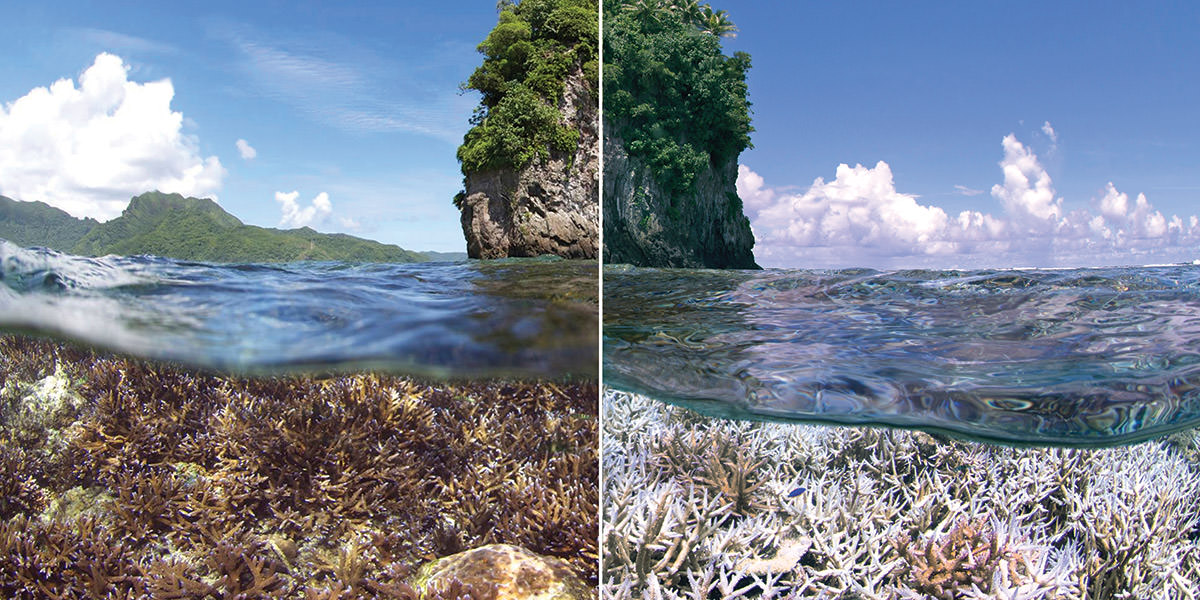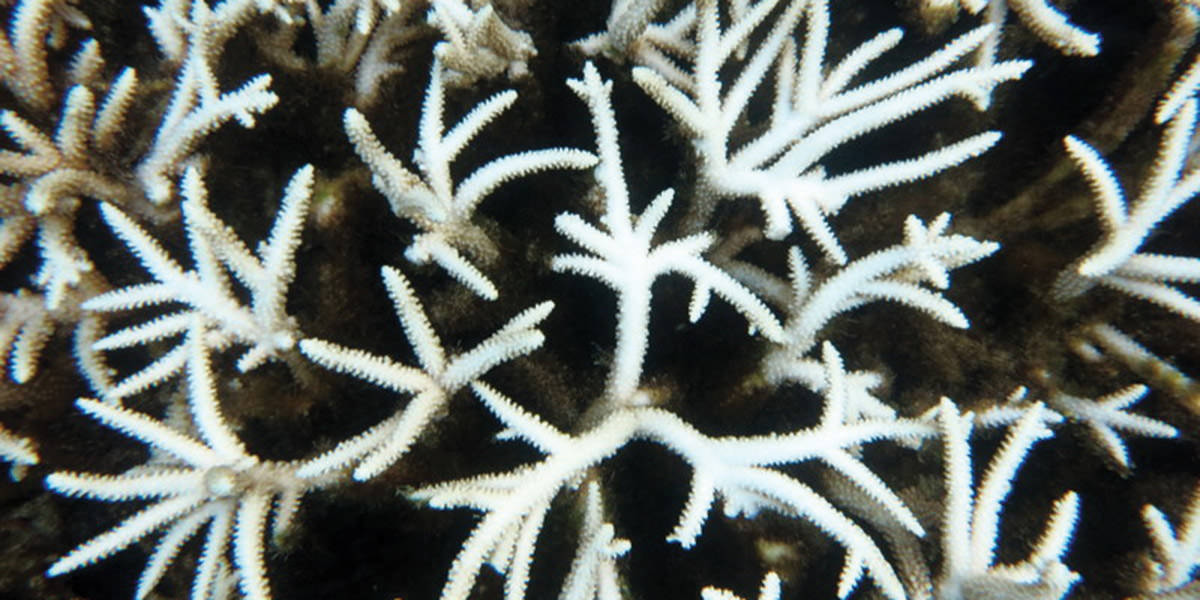In Hot Water
By Elizabeth Weinberg
Coral reefs support an abundance of life in the ocean — but they need our help.
Coral reefs are beautiful, delicate ecosystems that require specific ocean conditions, like warm, clear, unpolluted water, to survive. A healthy reef is a dynamic, lively place, able to support a dazzling array of life. But reefs — and the animals that call them home — are especially hard-hit by changing ocean conditions.
We affect Earth’s climate every day: when we burn energy sources like gasoline, oil and coal to fuel our cars or power cell phones and other technologies, those sources release carbon dioxide. That carbon dioxide builds up and acts as a heat-trapping blanket, keeping the heat from the sun close to the planet and warming the atmosphere.
As Earth warms, ocean temperature increases, and as a result, some tropical waters are becoming too warm for many species of coral. Corals depend on algae called zooxanthellae for food and oxygen. These colorful algae are also responsible for the vivid hues of coral reefs. But when corals are stressed by factors like changes in water temperature, they expel the zooxanthellae. Without their zooxanthellae, corals turn white and cannot get the nutrients they need to survive; this is known as coral bleaching.
In places like National Marine Sanctuary of American Samoa, sanctuary staff are witnessing bleaching events that transform reefs over just a few months. In Hawaiian Islands Humpback Whale and Florida Keys national marine sanctuaries, bleaching events are also harming reef health.
Scientists across the National Marine Sanctuary System are studying the effects of changing ocean conditions on coral reefs and other ecosystems so that sanctuaries can better protect these crucial places. Mitigating other factors that might stress corals, like overfishing, water pollution, and impacts by diving and other recreational activities, can also help bleached corals recover and survive.
But it will take all of us to protect these reefs, and other sanctuary ecosystems, from changing ocean conditions. By working together in our communities to reduce our fossil fuel consumption — through supporting local food consumption, public transportation options, and other initiatives — and minimize other stressors, we can help corals and other animals thrive. For more information on what you can do to help protect the ocean, check out thankyouocean.org.



